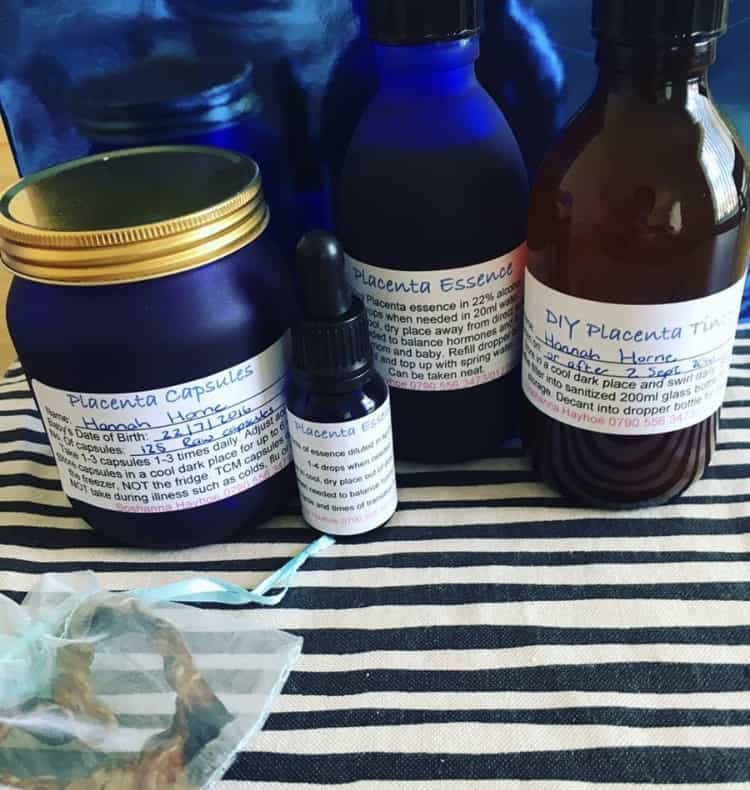Placenta encapsulation
Hannah Horne
Deputy Head of Midwifery, South East Kent, Qualifications BSc, MSc
@hanhorne1
Summary
Placental encapsulation is a relatively new concept for many women and midwives, most recently made popular through celebrity endorsements. However, the practice of human placentophagy “the ingestion of a human placenta postpartum, at any time, by any person, either in raw or altered (e.g., cooked, dried, steeped in liquid) form”1 has been reported within certain cultures for centuries and in mammals occurs more regularly.
Discussions about ingestion of the placenta are often met with grimaced faces, disgust and caution. It can be difficult for many women to explore this concept. This short article explores one woman’s experience and reviews the literature available.
What’s it all about?
Making a decision to encapsulate your placenta is complex and extremely personal. It will certainly be the topic of conversation between friends, family and health professionals all with their own views on your decision.
Research has reported potential benefits for placentophagy in non-human mammals, such as increased mother and infant bonding, a neurochemical increase of pain threshold and enhancement of maternal behaviour.2
The evidence on placentophagy in humans is limited and the majority of research that has been produced are small or are only pilot studies.3,4
The findings are complex and, on the whole, suggest that there are no perceived benefits of ingesting placenta 3,4,5 however there is a strong online community who link placenta encapsulation with3,4:
- increased milk supply
- increased iron levels
- enhanced bonding
- improved mood
- reduction of postnatal depression
 A recent review of the literature available suggests that placental tissue is a source of natural hormones, trace elements and essential amino acids – the ingestion of raw or dehydrated placenta could influence improvement in lactation, mood and recovery of women in the postnatal period.6
A recent review of the literature available suggests that placental tissue is a source of natural hormones, trace elements and essential amino acids – the ingestion of raw or dehydrated placenta could influence improvement in lactation, mood and recovery of women in the postnatal period.6
Some studies published suggest that placenta encapsulation increases postnatal red blood cells (haemoglobin).5 Although there are many flaws in the evidence available and the results as yet, mostly don’t find any benefits.
Whilst the majority of evidence shows no ill effects with ingesting placenta, women should be mindful that should their pregnancies or births be complicated by a viral or bacterial infection in themselves and/or the baby then placenta ingestion is not recommended.6
The large amount of anecdotal evidence online can be complicated to navigate. It is important that you find time to explore your individual reasons for contemplating placental encapsulation and share these reasons with your midwife who can support you with your choices. There are many companies that offer an encapsulation service, taking time to research their services and reading reviews is important. I would suggest meeting the person who will collect your placenta, often they enter your delivery room soon after delivery and you need to feel completely comfortable in their presence. The delivery room is a sacred place so to have a stranger enter can alter your experience in a negative way if you don’t make preparations beforehand.
Final thoughts
It is so important, as with all decisions you make during the pregnancy and postnatal period, to ensure you feel confident. Everyone will have an opinion but as long as you have the courage of your convictions and strength to withstand any negative comments you may experience benefits relating to your choice and control over the decisions you make. Moreover, it is important to fully research any provider you hire to support you through the process of placenta encapsulation – they will be with you at your most vulnerable time in the immediate postnatal period.
References
- Young S, Benyshek D. In Search of Human Placentophagy: A Cross-Cultural Survey of Human Placenta Consumption, Disposal Practices, and Cultural Beliefs.Ecol Food Nutr. 2010;49(6):467-484. doi:10.1080/03670244.2010.524106
- Kristal M, DiPirro J, Thompson A. Placentophagia in Humans and Nonhuman Mammals: Causes and Consequences.Ecol Food Nutr. 2012;51(3):177-197. doi:10.1080/03670244.2012.661325
- Beacock M, (2012), Does eating placenta offer postpartum health benefits, British Journal of Midwifery, 20 (7), pages 464-469
- McCrymont S, (2018), Plating up placenta, Midwives Magazine https://www.rcm.org.uk/news-views/rcm-opinion/plating-up-placenta/ Accessed 04/04/202
- Gryder L, Young S et al, (2017), Effects of human maternal placentophagy on maternal iron status: a randomised, double-blind, placebo controlled pilot study, Journal of Midwifery and Women’s Health, 62, pages 68-79
- Johnson S, Pastuschek J, Rödel J, Markert U, Groten T. Correction: Placenta – Worth Trying? Human Maternal Placentophagy: Possible Benefit and Potential Risks. Geburtshilfe Frauenheilkd. 2018;78(09):e1-e1. doi:10.1055/a-0753-5753









